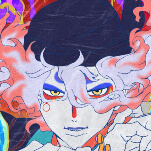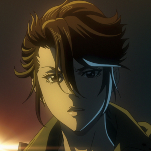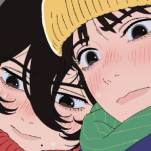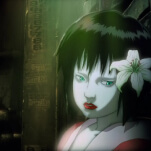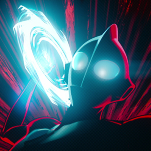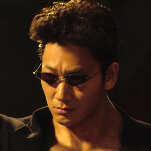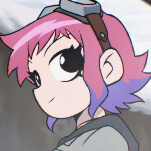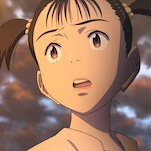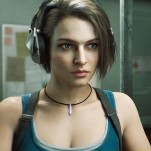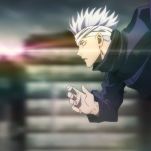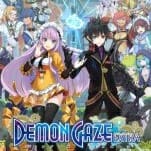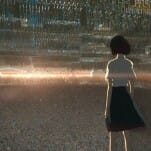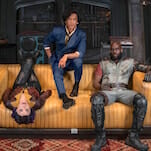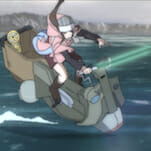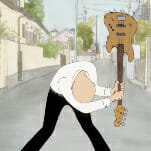In Netflix’s Heartrending Pluto, Androids Dream of Much More Than Electric Sheep
Photo Courtesy of Netflix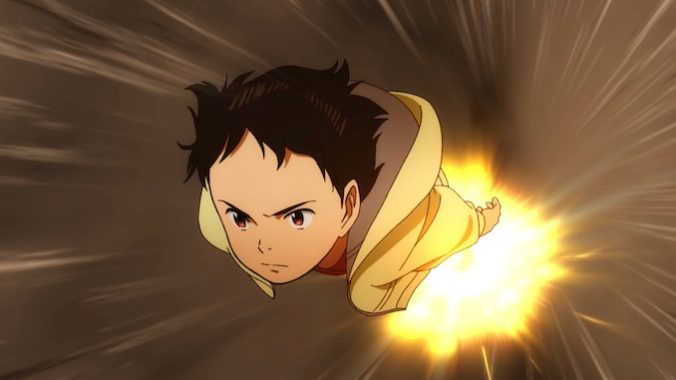
Naoki Urasawa is widely considered one of the most accomplished manga authors of all time, having penned classics like Monster, 20th Century Boys, Billy Bat, and more. But despite widespread acclaim, commercial success, and acknowledgments from his peers like Bong Joon-ho, who described him as “this era’s best storyteller,” strangely enough for a popular mangaka, very little of his work has made the leap into animation. The notable exception is Madhouse’s take on Monster, which perhaps unsurprisingly, is frequently counted among the best anime ever produced.
Finally, another of Urasawa’s beloved creations has made the jump to the small screen, and the wait was well worth it. Through its thoughtful exploration of this futuristic setting and ability to deliver heart-wrenching twists, Pluto is a sprawling mystery tale that elegantly intertwines heady themes with the personal realities of its characters. It may be easy to trace its influence, but thanks to its exceedingly specific touches and unique emotional tenor, it’s hard to think of another work that comes together quite the same. Simply put, it’s a masterstroke of science fiction.
For those unfamiliar, Pluto is a murder-mystery reimagining of the “The Greatest Robot on Earth” arc from Osamu Tezuka’s seminal manga Astro Boy. Plenty of comparisons have been made to Watchmen, and it’s easy to see why, as it also takes a style of story originally aimed at younger audiences and introduces geopolitical complexities and harsh realities (although it’s worth noting that Urasawa pushes back on this characterization, and insists these elements were present in Astro Boy to begin with).
We follow Gesicht, a robot detective dispatched by Europol to unravel a string of human and machine killings that have rocked the international community. The target of these crimes are high-profile roboticists and the seven most advanced androids in the world (including Gesicht). Beyond their graphic nature, these deaths are a shock because the suspect is a machine, shattering the common belief that robots are incapable of taking human life. From here, Gesicht is pulled deeper into an elaborate case that invites questions about the personhood of artificially created lifeforms and ties into the scars of an unjustified war.
On its face, many of this story’s ideas have already been interrogated ad nauseam, stretching as far back as when Asimov first penned the laws of robotics, but it finds unique angles on these conflicts that make them feel vital. In this futuristic society, humans and androids live side by side, and despite attempts at reform, machines are generally forced into roles of subservience. One nuanced element is that the series features characters with dramatically different points of view on the subject—some see robots as equals or close friends, while others either downplay their personhood or are outright human supremacists. Despite these debates over the sovereignty of machines, the narrative’s stance on the issue is clear, and it’s conveyed early on that these androids are clearly people who can form close bonds with those around them.
While many works in the space often feel as cold as the chrome exteriors of these machine lifeforms, this tale focuses on the warmth of the buzzing circuity beneath. In the first episode, we see the pain of humans publicly mourning the loss of Mont Blanc, an environmentalist bot they all looked up to, and later, we witness the beautiful friendship between a former war machine and a bitter, reclusive composer—an unlikely companionship that plucks at the heartstrings. This narrative’s speculative musings aren’t just fascinating in a cerebral sense but also hit in the gut, and it finds a unique emotional wavelength by portraying brutal realities alongside fleeting moments of heartfelt sentiment that are enough to leave an android teary-eyed.
Much of this success extends from its central characters. Although our protagonist Gesicht initially comes across as a perfectly assembled detective, it becomes apparent he’s more of a tragic noir figure as we witness flashes of a hidden past. The other six advanced robots in the crosshairs of the big bad have similar degrees of complexity. There’s North No.2, who hides his death machine frame under a flowing robe as he tries to find a place for himself beyond government-sanctioned robot killing. Epsilon is a pacifist who resisted attempts at being used as a weapon, a fact thrown in his face by both humans and his peers. His stance becomes even more justified when we see that he carries the terrifying power of a thermonuclear warhead. And then, of course, there’s Atom (aka Astro Boy), the protagonist of the story Pluto is derived from, who is also tied up in this brutal state apparatus.
-

-

-

-

-

-

-

-

-

-

-

-

-

-

-

-

-

-

-

-

-

-

-

-

-

-

-

-

-

-

-

-

-

-

-

-

-

-

-

-



